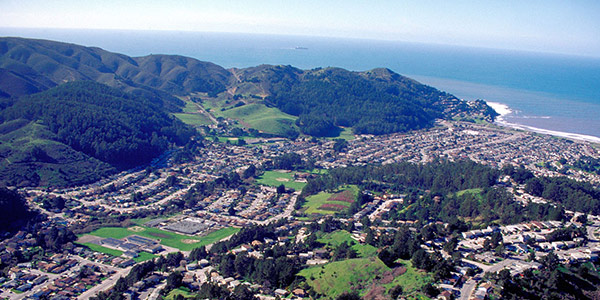By Hudson Sangree
The California Energy Commission boosted the state’s efforts to electrify buildings and improve the efficiency of electric appliances last week when it approved electrification and green energy ordinances in seven cities and required that swimming pool pump motors — a significant energy user in homes and hotels — become more efficient.
California has nearly 1.2 million swimming pools, more than one-fifth of all pools in the U.S., according to real estate data tracking firm Metrostudy. Replacing older burnt-out motors with high-efficiency ones eventually will save 451 GWh/year, the commission estimated.
“To put that amount of savings into perspective, that’s enough electricity to power the entire fleet of trains operated by BART, the Bay Area Rapid Transit train system — serving San Francisco, Oakland and many of the cities on the way to San Jose — for a year,” Noah Horowitz, the director of the Natural Resources Defense Council’s Center for Energy Efficiency Standards, wrote in a blog post praising the move.
The new California rules bolster national energy efficiency standards for pool pumps that take effect in 2021, the NRDC said.
In its April 8 meeting, the CEC also approved municipal rules for building electrification and energy efficiency in new construction that exceed current state standards.
The communities include Cupertino, the Silicon Valley suburb where Apple has its headquarters. The city of 60,000 residents adopted an ordinance requiring that new buildings be all-electric. The nearby cities of Saratoga and Pacifica will require new single-family and many multifamily buildings to use electricity for heating and cooling systems and water heaters.
San Francisco, along with San Rafael and Mill Valley in Marin County, passed rules requiring new buildings and remodels to achieve high scores under green building certification programs, including Leadership in Energy and Environmental Design. Those requirements are expected to result in the installation of electric heating and cooling systems in place of those that use natural gas.
A Los Angeles ordinance approved by the CEC requires that all buildings install cool roofs for the “reduction of the heat-island effect.”
Achieving Zero Carbon
The cities join a growing number of local governments instituting aggressive changes to reduce fossil-fuel emissions for residential and commercial structures. Last year, Berkeley became the first city to ban natural gas in new construction as other cities weighed similar measures. (See West Coast Pushes for Building Electrification.)
The Public Utilities Commission recently devoted $200 million to jump-start electrification efforts, for “the purpose of decarbonizing California’s residential buildings in order to achieve California’s zero-emissions goals,” Commissioner Liane Randolph wrote in her proposed decision, which the commission adopted March 26.
The state’s twin goals of greatly reducing greenhouse gas emissions and relying wholly on renewable and nonpolluting energy by midcentury are driving the electrification effort. Advocates see vehicles and buildings as areas where fossil fuels can be eliminated.
The cities that have adopted green building and electrification efforts are primarily located in wealthier and politically liberal coastal California. Residents of the state’s more conservative interior have, in some cases, resisted such efforts. (See Bakersfield Balks at Electrification with CPUC.)
But the movement is expected to grow in coming years both through mandatory efforts and voluntary replacement of natural gas furnaces and water heaters with energy-efficient systems.
The Sacramento Municipal Utility District, for example, offers rebates of $1,500 to $4,000 to residents who upgrade to electric heat pumps for home heating and cooling and $2,500 rebates for those who install heat-pump water heaters. SMUD has also been encouraging the construction of all-electric homes.
“Customers with all-electric homes in SMUD’s service area are well positioned for a renewable energy economy and can typically save $400 compared to homes that rely on gas for space heating and hot water,” the utility said in a news release. “These homes will help community-owned SMUD meet its aggressive commitment to reach carbon neutrality by 2040 and surpass the state’s greenhouse gas reduction goals of 80% by 2050.”




